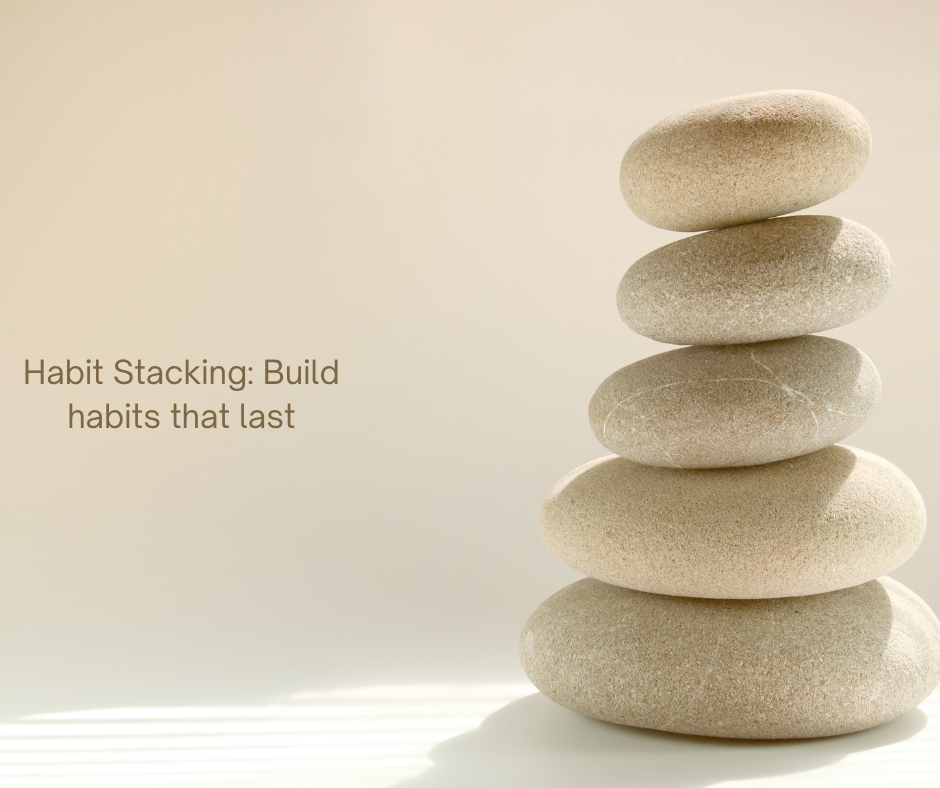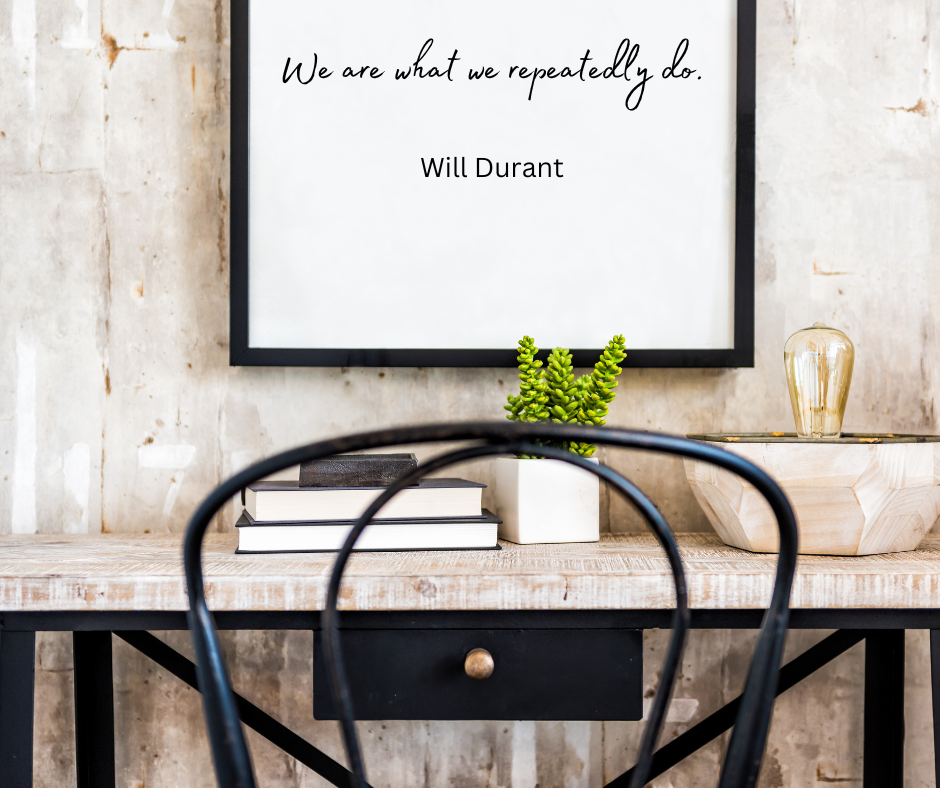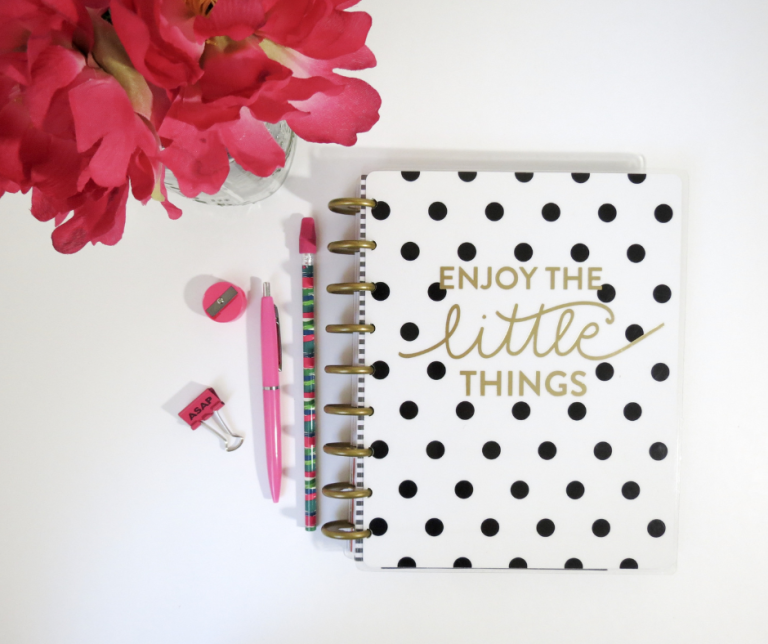How to make a habit stick
We’ve all been there. Excited to start a new habit, only to abandon it a few weeks later. But why is it so hard to make a habit stick? Are we lazy? Do we just lack self-discipline? Or are we constantly coming up with excuses to avoid the effort?
The truth is that forming a lasting habit isn’t about relying on motivation. Motivation is fleeting; it comes and goes. Instead, building a habit that truly sticks requires a system.
Think about brushing your teeth. You’re not motivated to do it every day, yet you don’t skip it. Why? Because it’s part of your routine. You do it without questioning or thinking, it’s automatic.
The key to creating a habit that lasts is to make it so ingrained in your daily life that it becomes second nature. It stops being a debate in your mind and becomes something you just do, like grabbing your keys before leaving the house. But getting to that point isn’t easy. It requires consistency, patience, and the right strategy.
I’ve learned this firsthand after over 20 years of struggling to build the habit of regular exercise. I’d start strong, but within weeks, I’d fall back into old patterns.
How I made a habit stick
After reading several books about habits (Atomic Habits) and experimenting with different approaches, I finally succeeded last year. Now, I exercise every single morning without fail.
Here’s exactly how I made it happen.
Step 1: Set up a system
The first thing I had to do was set up a system. I wrote down my exersize plan in the journal.
It was nothing too specific or detailed.
Just 8 am exercise – 10 minutes, weight training. That was it. Just a couple of words in my daily planner that I could tick off every day.
Saying, “I’m going to exercise every day,” sounds great in theory, but without a concrete plan, it’s unlikely to happen. Vague intentions alone won’t get you very far. You might manage to stick with it for a couple of weeks, but eventually, life gets in the way, motivation fades, and you simply give up.
To create a lasting habit, you need a crystal-clear plan. This means deciding on the exact details of your new routine: what time you’ll do it, how long it will last, and what type of exercise you’ll perform.
For example, instead of saying, “I’ll work out tomorrow,” you could plan something specific like, “I’ll do a 10-minute yoga session at 7:30 AM in my living room.” This clarity makes it easier to follow through.
But let’s be honest. We’ve all written things like “Exercise from 8-9 AM” in our to-do lists only to ignore them. Simply jotting down your intentions isn’t enough on its own. However, this step is still essential.
Let’s call this Step 1. It’s the foundation of building a new habit.
Take time to create your plan and commit to it by putting it in writing. Whether it’s in a journal, planner, or an app, defining the specifics is the first step toward making your habit stick.
Related post: How To Start A Journal: The Ultimate Guide
Step 2: Make it easy
The second step to make a habit stick is to make it easy, especially at the beginning. Starting with a goal like a 1-hour-long workout every day is too ambitious and difficult to maintain in the long run.
This step is crucial. I always tried to start exersize by joining the local gym, or taking classes that last for at least 1 hour. That was not achievable for me in the long run.
This time, I set an easy goal. I started to exersize for 10 minutes only. Every single day.
What happened after a few months was that this habit fitted into my routine seamlessly. And I stopped fighting with myself to do it.
There was a moment when I realized, exercise is no longer an issue for me! All of a sudden, I got a burst of motivation and pride, and upped my exersize time to 20 minutes!
The trick is to start small and keep it manageable. Instead of committing to an hour, begin with just 10 or 15 minutes of exercise each day.
Why? Because everyone can find 10 minutes in their day. It’s short enough to feel achievable, even on your busiest days. Doing something consistently, even for a short amount of time, builds the foundation for long-term success.
At this stage, your goal isn’t to create the perfect exercise routine—it’s to introduce the habit of daily movement and make it stick. You’re not ready for an ideal fitness regimen yet, and that’s perfectly okay. What matters most is showing up every single day.
But here’s the surprising part: many people find that these small, consistent habits add up in a big way. By sticking to your routine daily, even if it’s short, you’re already making a lot of progress
Step 3: Stack your habits

The third piece of advice that helped me successfully introduce a new habit and make it stick is something called habit stacking.
This means pairing your new habit with something you already do every single day without fail.
For example, I stack my exercise habit right after brushing my teeth in the morning. If I put off exercising until later in the day, it just doesn’t happen. Chores pile up, distractions take over, and before I know it, the day is gone.
I do the same with journaling, I stack it right after I sit down to drink my morning coffee.
At first, even this strategy might feel unnatural. You might forget to follow through or find it difficult to build momentum. That’s completely normal.
However, if you stay consistent, something amazing happens: after a few weeks or months, the habit becomes automatic.
Many people find success in stacking habits during their coffee-making ritual. While the coffee is brewing, they might stretch or do a quick workout. The key is to find an anchor in your day that makes sense for you and attach your new habit to it.
By using habit stacking, you not only create the structure for your new routine but also make it easier to stick with over time. It’s a simple yet highly effective way to build habits that last.
Step 4: Find support
Another powerful strategy for building a new habit is to find support.
I do this with my husband. For years, we both struggled to stick to a consistent exercise habit. But by supporting and encouraging each other, we finally managed to make it part of our daily routine.
If your partner isn’t interested, consider teaming up with a friend, sibling, or even a neighbor. Just make sure you are not skipping your new habit because you are waiting for someone to show up.
While having support is helpful, it’s not essential. Many people successfully introduce new habits entirely on their own. The key is staying consistent and remembering why you started in the first place.
You are your greatest source of accountability, and once the habit becomes part of your routine, you’ll feel empowered knowing you accomplished it independently.
Step 5: Track your habit in the journal

Another effective tip for building a lasting habit is to track your progress in a journal.
In the early stages of creating my exercise routine, I made it a point to tick off every single day I exercised in my journal. This simple practice kept me accountable and helped me stay consistent.
Tracking your habits is also a great way to spot patterns. If you notice a blank space on your journal page where a checkmark should be, it’s a clear reminder that you’ve slipped and need to get back on track.
It’s also important to be realistic. Life happens, and there will be times when sticking to your habit just isn’t possible. For example, if you’re feeling unwell, don’t push yourself to exercise.
I missed my morning exersize today because I feel I am coming down with a cold and my throat hurts. Missing a few days while you recover is okay.
Skipping habits occasionally for valid reasons doesn’t erase your progress. What matters most is returning to your routine as soon as you’re ready.
While I no longer track my exercise habit in a journal now that it’s firmly established, I found it invaluable during the early months.
And even now, if you’re starting a new habit, journaling is a simple yet powerful way to stay accountable and track your growth. Plus, it’s a great tool for reflecting on your progress and celebrating small victories along the way.
Step 6: Set Up Your Environment for Success
Take a look around you. Does your environment encourage you to stick to your new habit?
The way you arrange your surroundings can either help or hinder your progress, so it’s crucial to make your environment work for you.
For me, this means I need to make sure the space is clean before I go to bed. As I was trying to introduce several new habits, I made sure my clothes were ready for my morning walk, my journal was visible on my desk, and the kitchen was clean and ready for me to prepare my breakfast.
These small, intentional actions make it easier to stick to my habits because I’ve removed unnecessary friction.
Visual cues in your environment are incredibly powerful when it comes to forming habits. By seeing your workout gear or journal in plain sight, you’re reminded of what you’ve committed to.
On the flip side, it’s equally important to remove temptations or distractions that don’t serve your goals. For instance, if you’re trying to eat healthier, don’t leave sweets or junk food on your kitchen counter. Instead, stock your countertop with fruit or other healthy snacks.
If you want to focus without interruptions, put your phone in another room or out of sight for a few hours.
Your environment plays a significant role in shaping your behavior. By strategically placing things that encourage good habits and removing obstacles that encourage bad ones, you create a space that supports your goals.
Step 7: Focus on Repetition, Not Perfection
One of the most important lessons I’ve learned when building a new habit is to focus on repetition, not perfection. It’s easy to get caught up in the idea that every workout or journaling practice needs to be done perfectly.
However, striving for perfection can often lead to frustration and burnout. The key is to simply get it done, even if it’s not your ideal version of the habit.
On days when you’re feeling low on energy or when life throws unexpected challenges your way, don’t beat yourself up for not doing your usual routine. Instead, make a smaller, more manageable version of your habit.
For example, yesterday I was in a rush, so I only did 10 minutes of my exercise routine. When I am too busy to write a long journal entry, I write down just a couple of sentences.
While this may not be the ideal version of my habit, it’s still progress.
And the most important thing is to show up consistently. By focusing on maintaining the habit, even in a smaller form, you prevent missing days and falling off track completely.
Final Thoughts
By implementing the steps above, I finally managed to introduce several new positive habits and make them stick.
It wasn’t easy. And first few months, I thought that this would not work.
Somehow, through these small steps, I made real progress. I started to feel the benefits, both physically and mentally.
Now, I can’t imagine my days without these habits. It’s no longer a question of if I’ll do them. I just know I will, and I actually look forward to it.
If you take one thing from this post, let it be this: make the habit easy, and pair it with one that’s already firmly part of your routine.






